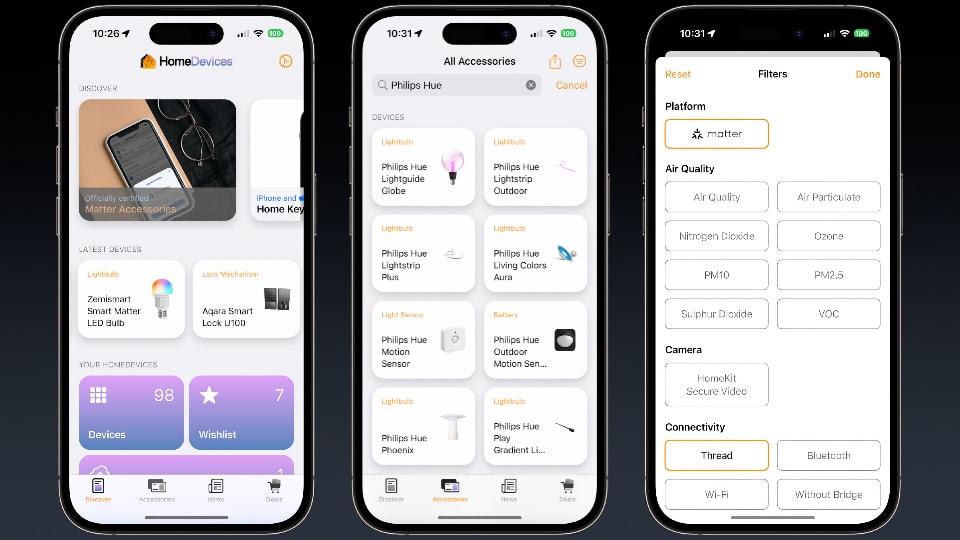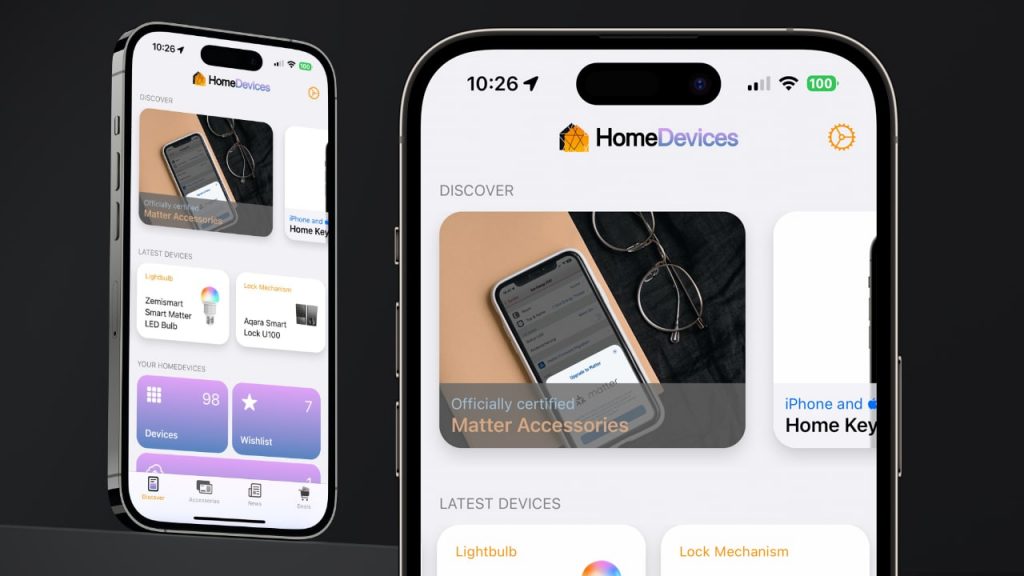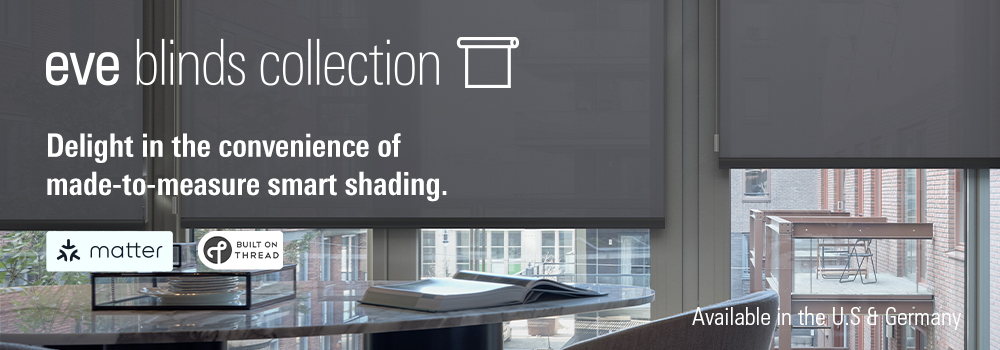
An interview with Yannic Fries, developer and publisher of the app “HomeDevices”. The software program for iOS (link), launched in 2021 as a product catalog for Apple HomeKit, now also lists Matter devices. It is thus the first smartphone app to offer users an overview of the slowly growing product range.
Dies ist die Übersetzung eines deutschen Interviews. Zum Original bitte hier entlang.
What were the beginnings of the app HomeDevices?
Yannic Fries: The app was a result of my German website smartapfel.de. We already had an overview of HomeKit devices there, but without information about what the products could do in particular. I wanted to show their functions in detail: How does the device appear in Apple HomeKit? What features does it have there and how can it be controlled, used in automations and so on. Maintaining something like that manually is almost impossible because there are far too many products. That’s where the idea for a community approach came from: I wrote an app that allowed our readers to upload their own products to a database. The app was distributed via the smartapfel forum and eventually HomeDevices came out of that.
So this is user-generated data?
Fries: Only to some extent, we also add devices ourselves, check uploaded information and research missing data. For some product categories, uploading doesn’t make sense because too many mistakes happen. Loudspeakers, for example, were uploaded multiple times in the past, even if they were already in the database. Therefore, since version 3.0 of HomeDevices, there is no upload option for speakers anymore. For TVs, it has never existed because their functions differ so much that errors would be practically unavoidable. However, the community approach made the start much easier. As a result, several hundred devices were in the database right from the start.

“Currently we have almost 1200 devices in the database. With model variants there are many more.”
How many products does HomeDevices know today?
Fries: You can see that in the app. There are probably just under 1200, the exact number is displayed under categories on the home page. However, there are considerably more in the database, almost twice as many – because there are several model versions or generations of many devices. However, only the current or latest version appears in the app, unless a user is using the older model in his HomeKit installation at home. Then, instead, he sees “his” version of the product with the corresponding image and functional scope.
And then the Matter standard came along, whose products also work in Apple’s ecosystem …
Yes, so we quickly decided that we had to consider Matter devices as well. However, there are hardly any products on the market so far, and the installed base is too small to get any significant reports from the community. That’s why we initially worked with the Distributed Compliance Ledger (DCL, see article on Matter security). This is where all products should eventually end up as soon as they are Matter-certified. However, the information cannot be easily reconciled with our database because, for example, the model or manufacturer designations differ. That’s why we manually enter which HomeKit product is also Matter-capable. In addition, a lot of information that could be in the ledger is not even maintained by the manufacturers.
Can you give us an example?
Fries: Among other things, a link to the device’s manual is planned there. That would be totally practical: I search for a product in HomeDevices and get the appropriate manual on request. Unfortunately, this is not possible because the corresponding field in the DCL is usually empty. When it comes to Matter, we can’t avoid manual maintenance of the database. At the moment this is still possible, with a manageable number of devices. Later, when the manufacturers launch new products every day, it will be difficult. Fortunately, since iOS 16.1, Apple shows in its HomeKit data whether installed devices are Matter-enabled versions. This then makes the whole thing easier to automate again. I would like to see much more information like this, but Apple is reluctant to do so, probably for reasons of smart home security and privacy.
“A lot of the information in Matter’s Distributed Complience Ledger is not even filled in by the manufacturers.”
The CSA lists newly certified Matter products on its website. Couldn’t this data be accessed?
Fries: Only to a limited extent because, on the one hand, this does not necessarily involve new hardware. Often, only Matter-capable firmware is certified for an existing product. The device itself is already in our database, the entry then only needs to be updated. On the other hand, the overview on the CSA website has nothing to do with the Distributed Compliance Ledger. They are two completely independent databases. What is on the website sometimes only shows up in the ledger much later. This makes automated data reconciliation difficult.
Sounds like a lot of effort. Is that why some features are only available in the paid Pro version of the app?
Fries: The feature set that was free when the app launched in 2021 still is today. Nothing has ever changed. However, new functions have been added that can be used in the form of a subscription or a one-time purchase. This is how we ensure the further expansion and maintenance of the service. Because HomeDevices is not a program that you develop once and then it’s done. The app and database are a constant source of work and take up a lot of time. We started with the goal of becoming the most comprehensive HomeKit database – and now the circle is widening to Matter products. HomeDevices provides device information that would otherwise have to be gathered laboriously, which is often not even available on the manufacturers’ websites.
The user interface is English, which speaks for a certain internationality. Where do your users come from?
Fries: From all over the world, there are users in North America, Europe, China and even Australia. However, the majority of users come from the USA and the DACH region, i.e. Germany, Austria and Switzerland.
“Extending the app from Apple Home to other platforms would be exciting, but raises lots of questions.”
An Android version of the app would further expand the potential user group. After all, Matter products don’t just work in a HomeKit environment. Are there any thoughts in this direction?
Fries: It would certainly be exciting to expand the whole thing to other platforms and also consider other ecosystems besides Apple. However, this quickly raises the question of functionality: To what extent does a Matter product differ in use under Apple Home, Amazon Alexa, Google Home, or SmartThings? Are there differences that HomeDevices would have to map in order to live up to its claim? We are currently still in the observation and discovery phase here – how the Matter topic can be designed and implemented in the long term. I hope that manufacturers will provide further information in the future that we can use for our database. So I have an Android app in mind, but it is not currently planned.
Mr. Fries, thank you very much for this interview.
Share this information:


